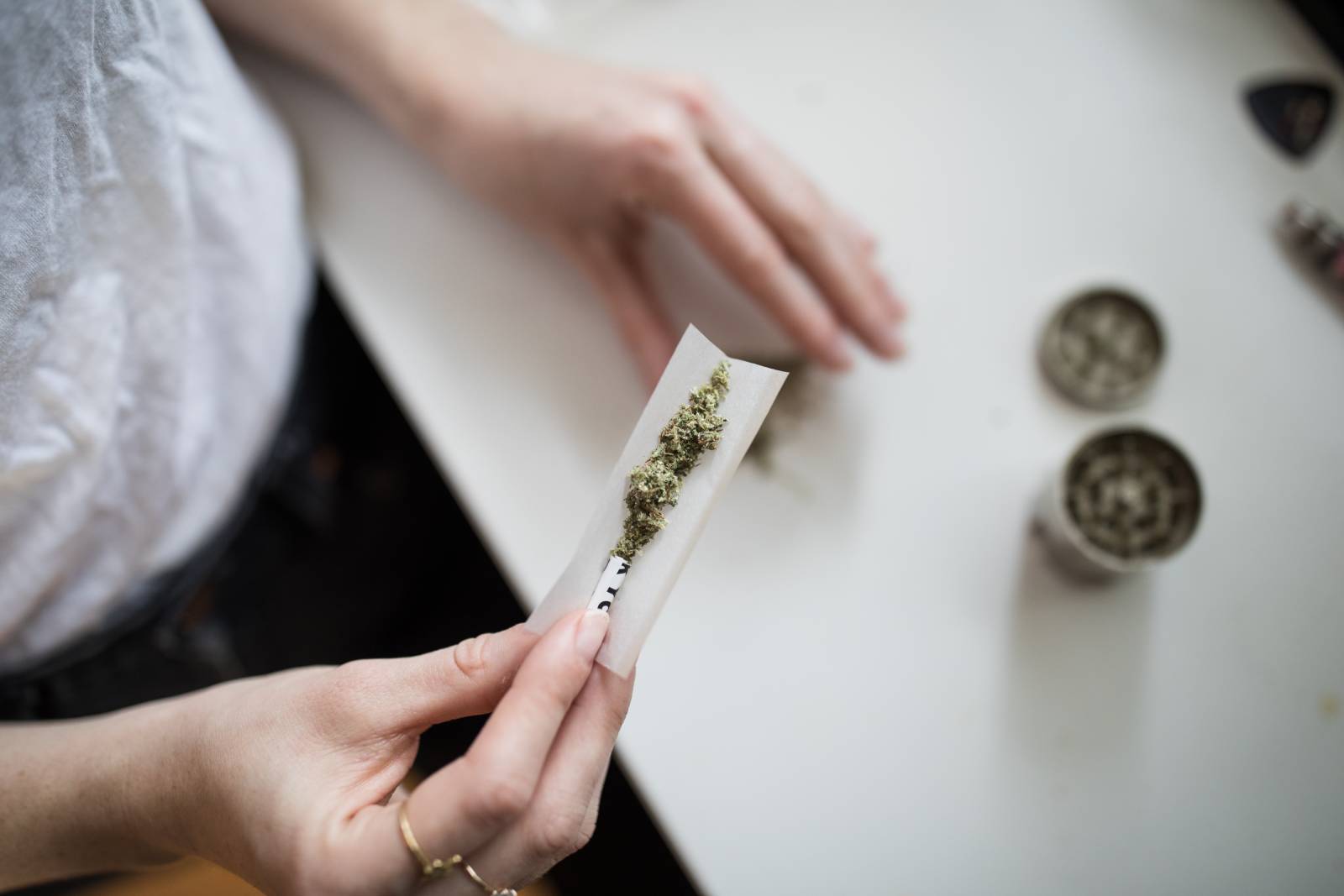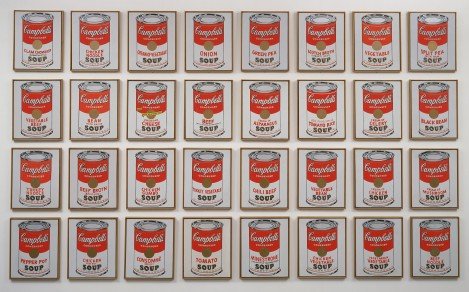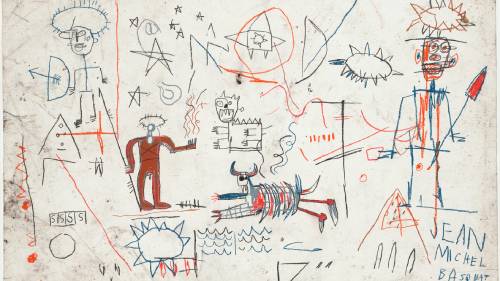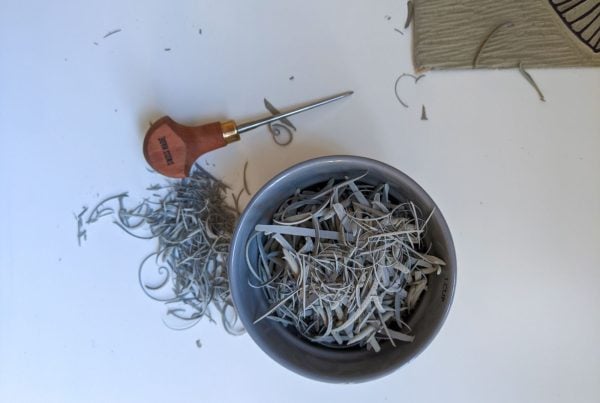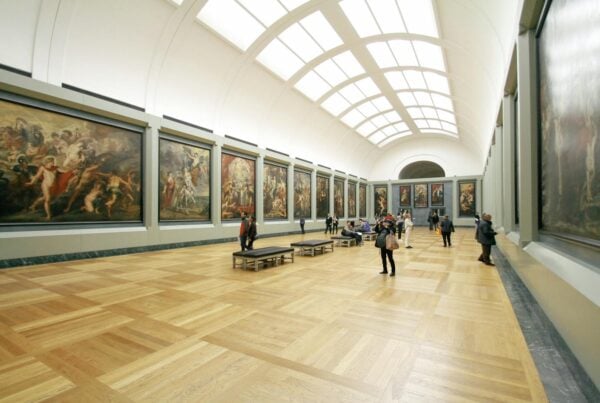Article commissioned by Hickman Design, Author – Dunja Karanovic
Art, Creativity, and Substances
Art and creativity have long been associated with altered states of consciousness. From the ‘tortured’ artists and opium dens of 19th-century Paris, to the surreal visions of Salvador Dali and Luis Bunuel, as well as the psychedelic experimentations of 1960’s counterculture, mind-altering substances have played a significant role in art history. Where do we draw the line between creative experimentation and substance abuse? Do we really need drugs to reach a new level of creativity, or does drug (ab)use make us less likely to produce anything meaningful?
In this article, we will examine the roles of different psychoactive substances in the experiences and artistic practices of some of the most influential artists in history. While it is true that these substances contributed to the creation of great works of art, keep in mind that the history of drug (ab)use in the art world is multifaceted and complex.
Table of Contents
Jean Cocteau (1889–1963)
Jean Cocteau was a French writer, filmmaker, and artist known for his experimental approach to art and his involvement with the Surrealist movement. However, Cocteau was also known for his struggles with drug addiction. Starting with opium and progressing to cocaine and morphine, Cocteau’s drug use began quite early. His addiction was often fuelled by the Parisian artistic community of his time, which was known for its heavy use of various substances – mainly alcohol, cocaine, and opium.
Avant-garde movements like Surrealism, Dada, and the Beat Generation, rejected authority and mainstream values, celebrating the irrational and subconscious. Many artists and writers saw drug use as a way to access new realms of consciousness and break free from the constraints of conventional thinking. As well as being a political act, drug use also provided an escape from the harsh reality and social upheavals of the interwar period in Europe, including the rise of fascism and the onset of capitalism.
Despite his addiction, Cocteau was able to create some of his most iconic works during his opium period, including his 1930 film The Blood of a Poet. One of Jean Cocteau’s most meaningful contributions when it comes to demystifying the relationship between drug abuse and art is his book Opium: the Diary of a Cure, which he also published in 1930. Opium chronicles Cocteau’s personal experiences with the drug, from the comfort and escape it offered him to his efforts to quit using. On the one hand, Cocteau described opium as a new way of looking at life, something that gave him a sense of well-being and security that [he] never experienced before. On the other hand, the artist also proclaimed he wanted to be free of this monster, which was taking his life and breaking down his will power. Cocteau candidly described both the allure of opium and the pain of withdrawal, ultimately saying that he wanted to be able to live and make art without the influence of opium.
Cocteau’s addiction continued throughout his life, leading to numerous health problems and hospitalisations. However, he remained a prolific artist, creating poetry, novels, films, and paintings. Cocteau’s willingness to discuss his addiction and the impact it had on his life and work has helped to break down addiction and encourage greater understanding and empathy for those struggling with substance abuse.
Pablo Picasso (1881–1973)
Pablo Picasso is probably one of the most influential artists of the 20th century, but his life and work were also marked by a complicated relationship with addictive substances.
Picasso was introduced to opium as a teenager, and continued using it throughout his twenties and thirties. His famous Blue Period is believed to have been influenced by his opium use, as the series is characterised by melancholy, depression, and suffering.
Picasso was first introduced to cocaine by his friend Gertrude Stein, the American writer and art collector who was also known for her experimentation with drugs. Stein’s relationship with cocaine spanned almost three decades, until she experienced a series of strokes in the 1930s, which left her partially paralysed. It was before this, however, that Picasso also became addicted to the drug. Cocaine made Picasso moody and difficult to work with, causing many issues in his personal relationships. Despite this, he created some of his most well-known works during this period, such as Les Demoiselles d’Avignon, which are considered essential for the development of Cubism.
In the 1930s, Picasso started experiencing mental health problems related to his cocaine use, which eventually led him to quit using. During the 1940s Picasso was no longer addicted to cocaine, but he was drinking profusely. Under the influence of alcohol, Picasso was known to act in violent and disruptive ways, which negatively impacted his relationship with his wife and children. Despite his struggles with addiction, Picasso lived until the age of 92 and continued creating great works of art until the end of his life.
Andy Warhol (1928–1987)
Andy Warhol was an American artist and Pop Art icon known for his experimentation with different media, bold use of colours, and engagement with consumerist culture. Warhol gained celebrity status during the so-called countercultural decade, and was a regular in the 1960s and 1970s New York art and party scene. Like many artists at the time, Warhol experimented with drugs like LSD and marijuana, but his drug of choice were amphetamines.
While drugs were an integral part of the party culture Warhol belonged to, his use of amphetamines is linked to the artist’s issues with body image. He was also known to use Obetrol, a diet pill containing methamphetamine. Amphetamines allowed Warhol to work longer without sleep, increasing his creative output, but they also helped him to maintain his slender figure.
Andy Warhol’s addictions were closely related to his mental health issues, as he struggled with anxiety and obsessive-compulsive behaviour. Some of his most famous works, such as Campbell’s Soup Cans, are believed to be a commentary on the impacts of industrialisation and drugs on American society. The repetitive, machine-like nature of Warhol’s paintings and silkscreens is often associated with the effects of amphetamines on people’s perception and behaviour.
Warhol himself acknowledged the connection between his art and drug culture; in an interview, he stated: Art is what you can get away with, and I think using amphetamines is a way of getting away with things. Warhol’s drug experimentation ended tragically in 1987, when he died as a result of complications from gallbladder surgery. While it is uncertain how much his drug usage contributed to his death, it is apparent that his drug experiences influenced his life and work.
Jean-Michel Basquiat (1960-1988)
When it comes to the history of drug addiction in the art world, the story of Jean-Michel Basquiat is one of the most well known. As a rebellious teenager growing up in Brooklyn, New York, Basquiat experimented with a variety of drugs, including marijuana and LSD. As he rose to fame as a young artist in the 1980s, Basquiat was known for using cocaine and heroin. Drugs were his way of coping with the pressures of celebrity and his personal mental health issues.
Basquiat’s drug use was reflected in his art, which often incorporated symbols and imagery associated with drug culture. His paintings often included the words milk and blood, which critics interpreted as references to heroin use, as well as imagery that points to the effects of different substances on the body. Despite his struggles with addiction, Basquiat was a prolific artist and he became one of the most celebrated American painters of the 1980s.
In 1988, Jean-Michel Basquiat died of a heroin overdose, aged only 27. His untimely death was a shock to the art world, and it remains as a cautionary tale about the destructive nature of drug addiction. In the years since his death, Basquiat’s legacy has continued to grow, with his art remaining as relevant and influential as ever.
A Different Perspective – Susan Sontag and the New York Intellectuals
It is important to note that drug use was not universally accepted or celebrated in the art world. Many 20th century artists and intellectuals were highly critical of drug use and saw it as a threat to individual health and social stability, especially those associated with the Bloomsbury Group in England and the New York Intellectuals,.
The New York Intellectuals were a group of writers, critics, and academics who emerged in the mid-20th century and played a significant role in shaping American intellectual and cultural life. The group included figures like Lionel Trilling, Irving Howe, Susan Sontag, and Dwight Macdonald, among others. The New York Intellectuals were united by a shared commitment to critical thinking, cultural analysis, and political engagement.
To many members of the group, drug use was a form of escapism that limited one’s capacity for critical thinking and social engagement. Irving Howe wrote that the kick of drugs… gropes for sensations… chooses surfaces against relationships… proposes an art as disposable as a paper dress. Susan Sontag was directly against drug abuse, believing drugs had the potential to transform society in a negative and destructive way. Despite her own experimentation with drugs in the 1960s and 1970s, Sontag was critical of the romanticisation of drug culture and the dangers of drug addiction.
In her 1967 essay The White Race and the Red: A Cultural View of the Drug Scene Sontag wrote about the rise of drug use and addiction in America and argued that drug culture was a symptom of deeper social and cultural issues. She criticised what she saw as a hippyism that romanticised drug use and rejected traditional social norms, and she called for a more critical approach to drug policy. In a 1978 interview for Rolling Stone, she stated that the addict is one who has given up on the possibility of himself being loved.
Sontag also wrote about the dangers of drug addiction in her own life. In her 1978 essay Illness as Metaphor, Sontag wrote about her own experiences with cancer and the social and cultural myths surrounding the disease. She also reflected on her past drug use and addiction, writing that drugs are a way of not dealing with reality.
Despite her criticisms of drug culture and addiction,Sontag also believed in the importance of individual freedom and the right to personal choice. She acknowledged that the 1960’s and 1970’s used drugs as a way of reaching different levels of consciousness and finding oneself, but she was also concerned about the negative consequences of romanticising and marketing drugs on a wider scale. She saw drug addiction as a complex issue that required a nuanced and compassionate approach, rather than a simple condemnation or moral judgement.
Conclusion
Many of history’s most celebrated artists, musicians, and writers have been known to struggle with addiction and substance abuse. Artists like Andy Warhol suggested that drugs and other substances may have played a role in their creative process, enabling them to access new ideas and perspectives. Others, like Jean Cocteau also pointed to the ways in which addiction and substance abuse can disrupt an artist’s life and work, leading to a decline in productivity and output.
Overall, the presence of drugs, especially in the 20th century art world, reflects the broader social and cultural changes of the time, as well as the ongoing tension between convention and experimentation in artistic practice. Drug use may have helped some artists expand their creative horizons, but it also carried risks and negative consequences, both for individuals and for society as a whole.
While the relationship between creativity and drug use is complex, there is evidence to suggest that there may be a correlation between the two. It is important to note that correlation does not equal causation, and that there are many factors that may contribute to both drug use and creativity. It is also important to recognise the dangers of addiction and substance abuse, which can have a devastating impact on an artist’s life and work. Ultimately, the links between creativity and drug use are complex, and there is much more research to be done to fully understand this relationship. In any case, we can say for certain that our productivity and creative flow can in no way be hindered by maintaining mental health and wellbeing. If you need some inspiration when it comes to overcoming creative block and expanding your skills and practice, check out this blogpost, or this one!
Further Reading:
- 7 Famous Artists Who Experimented with Narcotics
- Famous Artists & Their Drugs of Choice: Warhol, van Gogh, & More
- ‘The Painter of Light’ Had a Dark Side: 10 Artists Who Understood Addiction | by Paul Fuhr
- 10 Geniuses Who Owe Their Inspiration To Drugs – Listverse
- Where Have All the Artist-Addicts Gone? – The New York Times
- The Drugs Used By Your Favorite Artists | Complex
- 5 Artists Who Were Inspired By Drugs And Pain – Cultura Colectiva
- The Complicated Relationship Between Opium and Art in the 20th Century | Artsy
- Psychedelic Drugs and the Fine Arts in the 1960s and 1970s
- What Was Andy Warhol’s Addiction? – Sunlight Recovery
- The Counterculture Hippie Movement of the 1960s and 1970s




